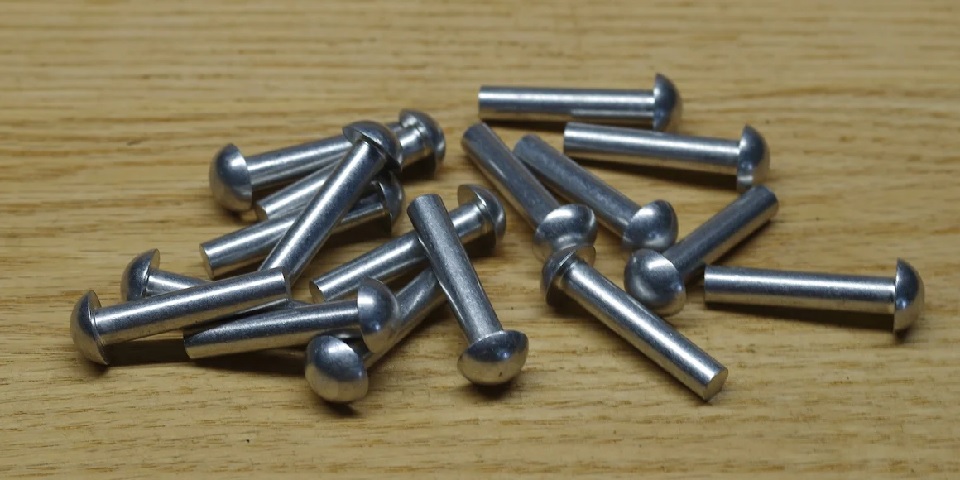In the world of modern construction and manufacturing, the integrity of a structure is only as good as its components and the methods used to join them. Among the myriad of fastening solutions, structural rivets play a pivotal role in ensuring that assembled structures are not only durable but are also capable of withstanding the stresses and strains they will face throughout their lifespan. This article explores the significance of structural rivets and how they have become indispensable within the industry.
The Emergence of Structural Rivets
Historically, rivets have been a form of fastener dating back millennia, serving as a reliable method for joining different materials. With technological advancements, the evolution of rivets has led to the development of specialized types designed for specific applications. Structural rivets, in particular, have emerged as a fundamental component in heavy-duty assembly applications, providing superior strength and support.
Benefits of Structural Rivets in Construction
The use of structural rivets confers several advantages in construction and assembly processes. Their high shear and tensile strength make them suitable for applications where significant forces are in play. Additionally, the permanency of their installation lends itself to a maintenance-free solution, which is pivotal in applications where disassembly is neither intended nor desirable.
Comparing Structural Rivets with Other Fasteners
When comparing structural rivets to other fastening methods, one must consider reliability and efficiency. Unlike traditional nuts and bolts, which may loosen over time, structural rivets provide a more secure and vibration-resistant joint. While nutserts offer a reusable threaded insert for attaching components, they do not always provide the same level of structural integrity as rivets, especially in load-bearing situations.
The Installation Process of Structural Rivets
Installing structural rivets is a specialised process that requires precision and expertise. The process, typically involving a pneumatic or hydraulic rivet gun, ensures that the rivet is deformed and expanded within the hole, creating a permanent, tamper-proof fixture. This is in stark contrast to other methods such as using an adhesive, which may be subject to environmental factors that can degrade its bonding capacity over time.
Applications of Structural Rivets
Structural rivets are used across an array of industries, including aerospace, automotive, and civil engineering. They play a crucial role in the construction of bridges, commercial vehicles, and even in residential buildings, where the safety and stability of the structure cannot be compromised.
Innovations in Riveting Technology
The fastener industry continues to innovate, with new designs and materials being introduced to make structural rivets even more effective. For example, advancements in metallurgy have led to the creation of rivets that can withstand extreme temperatures and corrosive environments, further increasing their applicability and reliability in challenging conditions.
Quality Assurance for Structural Rivets
Given the critical role these components play, manufacturers of structural rivets adhere to stringent quality assurance protocols. Each batch undergoes rigorous testing procedures to ensure that they meet the required specifications for strength and durability. This includes both physical tests as well as reviews of manufacturing processes to guarantee consistency and reliability.
Environmental Considerations
In today’s environmentally conscious world, the sustainability of construction methods is increasingly scrutinised. The use of structural rivets is considered environmentally friendly due to their durability and the fact that they do not require replacement, reducing waste and the need for additional materials.
Training and Knowledge Transfer
Critical to the effective use of structural rivets is the training of personnel. Skilled workers must understand the intricacies of rivet installation to ensure optimal performance. Therefore, companies often invest in training programs to maintain high standards in their assembly operations.
Maintenance and Inspection of Riveted Joints
Despite the long-term reliability of riveted joints, regular inspection is still essential, particularly in sectors such as aviation where safety is paramount. Inspectors look for signs of stress or damage that could compromise the integrity of the joint, although such instances are rare with properly installed structural rivets.
Creative Uses of Structural Rivets
Beyond their practical applications, structural rivets have also found a place within the realm of architectural design. Their industrial aesthetic is sometimes deliberately exposed in modern architecture, where functionality merges with visual appeal, showcasing the structural elements as features of the design itself.
Choosing the Right Rivet for Your Project
Selecting the appropriate type of rivet is fundamental to the success of an assembly project. Structural rivets come in various shapes, sizes, and materials; thus, it’s vital to match the correct rivet to the specific requirements of the task at hand. This ensures the long-term stability and strength of the assembled structure.
Future of Riveting in Modern Assembly
The world of fastening solutions is ever-evolving, and riveting technology is no exception. With ongoing research and development, the future may see even more innovative types of structural rivets capable of providing solutions to emerging challenges in construction and manufacturing.
The role of structural rivets in modern assembly is clear: they are a cornerstone of fastening solutions, offering reliability, strength and durability. Their contribution to the construction and manufacturing industries is unparalleled, demonstrating their indispensability in securing structures that last.



